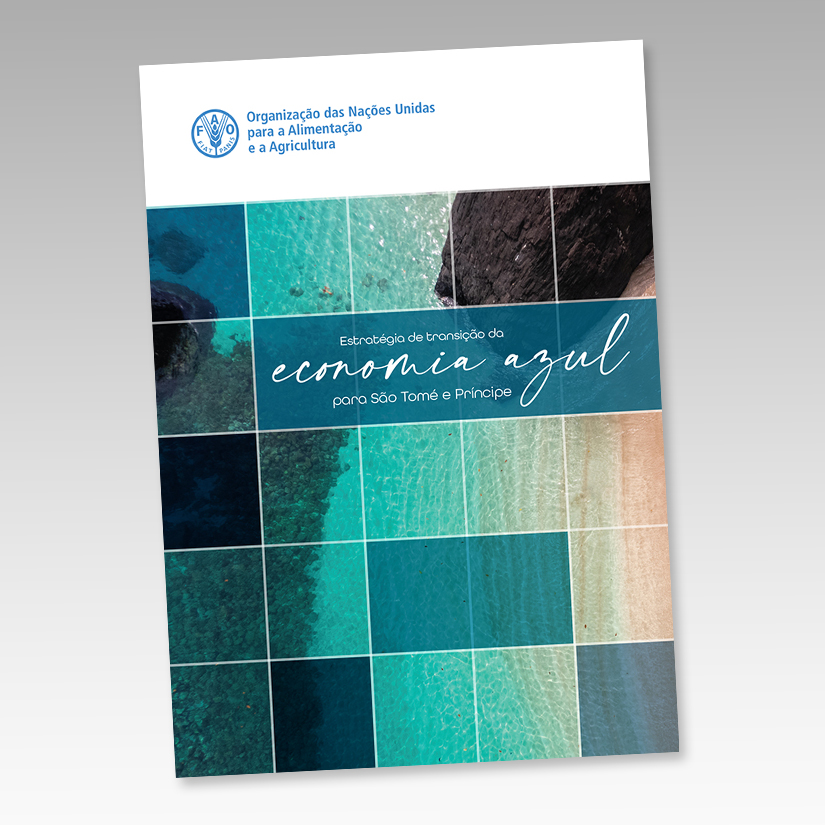Food and Agriculture Organization of the United Nations (FAO), 2021



Context
The Blue Economy represents a novel concept and approach aimed at promoting growth within maritime economies by valuing oceanic and coastal resources. This sector encompasses a wide range of activities, including fishing, aquaculture, marine and coastal environments, tourism, renewable energy, mineral extraction, and port infrastructure development. However, these industries require significant investment, often relying on state intervention or involvement from international actors, which can strain national economies and hinder local development.
As countries aim to expand their maritime economies, they must also contend with the environmental pressures on aquatic ecosystems and the ocean, exacerbated by human activities. This situation necessitates strategic long-term planning to protect ecosystems while promoting sustainable economic growth.
Objectives
- Promote Sustainable Growth in Maritime Economies: The transition to a Blue Economy seeks to harness the potential of oceanic and coastal resources while ensuring the sustainability of marine ecosystems.
- Enhance Food Security and Livelihoods: The initiative aims to contribute to national wealth, create decent jobs, and improve food security, particularly for communities dependent on marine resources.
- Build Climate Resilience: Developing a Blue Economy also focuses on building resilience to climate risks, reducing environmental and energy waste, and adhering to international sustainability commitments.
- Empower Communities and Stakeholders: By facilitating the transition to new practices and behavior changes, the initiative aims to empower local communities and economic actors to engage in sustainable practices that benefit both the environment and the economy.
Solution
The shift towards a Blue Economy requires strong political commitment and coordinated governance across sectoral economies. Key strategies include:
- Institutional and Policy Reforms: Governments need to reform governance structures that often lead to competition and lack of coordination among sectors, focusing on policies that support long-term sustainability.
- Strategic Investment and Incentives: The transition requires new investment models and incentives that support sustainable practices, reduce carbon and energy waste, and adapt to climate risks. It also involves capacity-building initiatives for communities and stakeholders to promote new behaviors and value chains.
- Integrated Knowledge Systems: Strengthening knowledge production and monitoring systems is crucial for better understanding marine ecosystems and managing access to resources. This includes consolidating mechanisms for innovation in the production and control of marine exploitation systems.
- Collaborative Framework: Developing a strategic and participatory framework involving both public and private sectors is vital for the transition. This includes new tools for monitoring, evaluation, and communication, and more incisive dissemination of best practices and sustainable models of investment.
Results
- Economic Growth and Job Creation: A successful transition to the Blue Economy can create new jobs in sectors such as tourism, fisheries, renewable energy, and maritime transport, contributing to inclusive and sustainable economic growth.
- Improved Food Security: By sustainably managing marine resources, the Blue Economy can contribute to food security, particularly by providing protein to malnourished populations, the poor, and children.
- Environmental Protection: The Blue Economy also aims to protect ecosystems, safeguarding biodiversity, threatened species, and essential ecosystem services.
- Increased Climate Resilience: The transition promotes resilience by reducing carbon emissions, minimizing energy and environmental waste, and enhancing adaptation to climate risks.
- Enhanced International Standing: By adhering to international conventions and sustainable development goals, countries transitioning to a Blue Economy can strengthen their global reputation and access international funding for development projects.
Challenges and Limitations
- High Costs: The development of a Blue Economy requires substantial investments, which may strain public resources and lead to increased dependency on foreign investors.
- Environmental Pressures: The expansion of maritime economies can exacerbate pressures on aquatic ecosystems, including overfishing, habitat destruction, pollution, and the impacts of climate change.
- Complex Governance: The governance of Blue Economy sectors is often fragmented, with little coordination between industries, which can hinder effective policy implementation.
Lessons Learned and Future Perspectives
- Global Awareness and Action: There is growing global awareness of the damage caused to ocean ecosystems by human activity. While the impacts of such activities can be reversed, continuing on the current path without change is not a viable option. Governments must take strong political action to drive the transition to a Blue Economy, ensuring the protection of ecosystems while fostering economic growth.
- Country-Specific Approaches: Each country must consider the challenges and opportunities associated with the Blue Economy within its own economic context. Identifying the most viable investment opportunities, transition pathways, innovative technologies, and sustainable practices is key to creating a resilient and sustainable maritime economy.
By focusing on sustainable practices, strategic investment, and coordinated governance, countries can harness the potential of the Blue Economy to support long-term economic growth, protect ecosystems, and build resilience to climate change.


